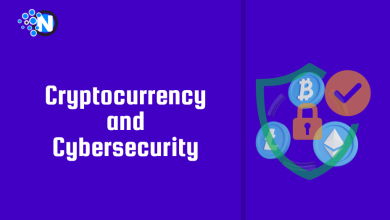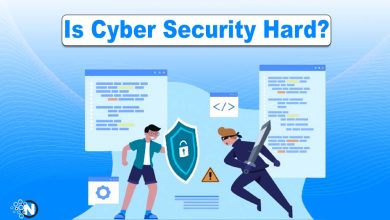Strategies for Securing an API Without Automation

Application Programming Interfaces (APIs) play a pivotal role in enabling seamless communication between different software systems. However, as APIs become increasingly critical, ensuring their security becomes a paramount concern. While automation tools offer efficient ways to enhance API security, not everyone has access to them. In this article, we’ll explore strategies for safeguarding your APIs without relying on automation, emphasizing practical steps to maintain data integrity and protect your systems.
What is Meant by API Security?
Application Programming Interface (API) security refers to the protocols and procedures put in place to ensure that APIs maintain their intended levels of confidentiality, availability, and integrity.
To protect application programming interfaces (APIs) from security risks and illegal use, API security measures are put in place. It is crucial to have robust API security measures in place to ensure that all API queries are legitimate. All API responses are safe from being intercepted or used in malicious ways because of security best practices.
1. Thorough API Documentation and Training
Start by crafting comprehensive API documentation that outlines security practices, authentication methods, and best practices. Educate developers, both within your organization and those who consume your API, about potential vulnerabilities and how to mitigate them. By ensuring everyone understands the security landscape, you build a solid foundation for a secure API ecosystem.
2. Implement Strong Authentication and Authorization
One of the fundamental steps in API security is implementing robust authentication and authorization mechanisms. Utilize techniques like API keys, tokens, or OAuth to validate user identities and grant appropriate access levels. Focus on the principle of least privilege, granting only the necessary permissions to users or applications, thus minimizing potential risks.
3. Regular Code Reviews and Testing
Thoroughly review your API code to identify vulnerabilities that could be exploited. Regular code reviews, performed by experienced developers, can help catch security gaps that might have been overlooked. Additionally, conduct manual testing to simulate potential attacks and ensure the API can withstand common threats, such as SQL injection or cross-site scripting.
4. Input Validation and Data Sanitization
Implement rigorous input validation to prevent malicious input from causing vulnerabilities. To reduce the risk of injection attacks, it’s important to sanitize and validate any input from the user. By validating user input on both the client and server sides, you can significantly reduce the possibility of attacks that manipulate the system.
5. Use Encryption for Data Transmission
Encrypt API data to avoid eavesdropping and unauthorized access. Use HTTPS to secure client-server communication. Encryption improves security by making it more difficult to decode sensitive information.
6. Rate Limiting and Throttling
Prevent potential abuse or attacks by implementing rate limiting and throttling mechanisms.Limiting the number of requests made by a user or application in a specific timeframe helps prevent brute force attacks and resource exhaustion attempts. This approach helps maintain API availability and performance.
7. Error Handling and Reporting
Thoughtful error handling can contribute to your API’s security. Provide generic error messages to avoid giving attackers insights into potential vulnerabilities. Implement proper logging to track unusual activities and potential attacks. Regularly review logs to identify anomalies and take proactive measures to counteract threats.
8. Secure Data Storage
Safeguard sensitive information stored within your API’s databases. Utilize encryption to protect data at rest and avoid storing unnecessary information. Ensure that passwords and other critical data are not stored in plain text format, minimizing the potential impact of a breach.
9. User and Role-Based Access Control
Implement a user and role-based access control system to manage who can access specific resources within your API. Define different user roles and their associated permissions, ensuring that only authorized users can perform specific actions. This granular approach helps prevent unauthorized access and maintains data confidentiality.
10. Regular Security Audits and Assessments
Conduct regular security audits and assessments to identify vulnerabilities that might have arisen over time. Engage third-party security experts to perform penetration testing and vulnerability assessments on your API. These assessments provide an objective evaluation of your API’s security posture and offer insights into potential weaknesses that need to be addressed.
11. Patch Management and Updates
Stay vigilant about patch management and keep your API components up to date. Monitor security advisories and promptly apply patches to address known vulnerabilities. Outdated software components can become easy targets for attackers, so ensure that your API’s dependencies are regularly reviewed and updated.
12. Incident Response and Recovery Plan
Prepare for the possibility of a security incident by developing a comprehensive incident response and recovery plan. Define roles and responsibilities, establish communication protocols, and outline steps to mitigate the impact of an attack. Having a well-defined plan in place helps minimize downtime, restore services quickly, and maintain trust with your users.
13. Educational Resources for Developers
Provide educational resources and training materials specifically tailored to developers working with your API. Offer guidelines on secure coding practices, common vulnerabilities to watch out for, and examples of how to implement security measures effectively. Provide programmers with the required resources to design secure code from the outset to reduce API security issues.
14. MFA – Multifactor Authentication.
Implement multi-factor authentication to secure API user accounts. User authentication should include a password and a mobile device-sent one-time verification code. MFA adds security even if user credentials are compromised.
15. Regular Security Awareness Training
Conduct regular security awareness training sessions for both your internal teams and external developers using your API. Educate them about emerging security threats, social engineering tactics, and best practices for maintaining a secure API environment. By fostering a culture of security awareness, you create a stronger line of defense against potential breaches.
Why security of APIs important?
APIs present unique challenges within the broader context of cybersecurity, encompassing a wide variety of internet technologies. APIs, or application programming interfaces, act as go-betweens that link an organization’s external developers to its internal systems. As the vulnerability of an endpoint could lead to illegal access to sensitive information, security breaches pose a risk to both applications and users.
Conclusion
While automation tools can significantly enhance API security, implementing effective strategies without automation is still possible. To establish a secure API environment, it is crucial to prioritize comprehensive documentation, robust authentication, and frequent testing, among other practical measures. It is important to note that maintaining security is an ongoing process that demands constant vigilance and adaptability to emerging threats. Regardless of the size of your business, implementing these strategies can effectively protect your API and the confidential information it manages.




